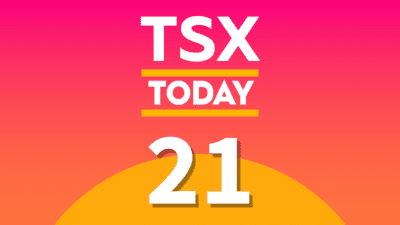If you are new to stock investing, you are likely overwhelmed by all the terminology out there. It’s hard to know which numbers to pay attention to when you aren’t sure what they mean. Today, let’s talk about one term and how it can affect your investment choices.
What is market capitalization?
Market capitalization, or market cap for short, is a term you’ve likely heard if you pay any attention to stocks. It is one of many ways to determine a stock’s value. You get a stock’s market cap number by multiplying all of the outstanding shares of a stock by the current price to buy a single share of that stock. (Outstanding shares are all shares that have been issued by a company and are still available for purchase on the market.)
Let’s take a look at Toronto-Dominion Bank (TSX:TD)(NYSE:TD) as an example. TD currently has 1.849 billion outstanding shares. On October 22, TD’s share price closed at $71.67 on the TSX.
1.849 billion x $71.67 = 132.51 billion
TD’s current market capitalization is $132.51 billion
Market capitalization changes regularly, because stock prices change regularly. However, most stable stocks will have market caps that stay within a narrow range.
What are the differences in market capitalization?
Stocks get classified based on their market capitalization. If you’ve ever heard of small-cap or large-cap stocks, that means how big a stock’s market capitalization is. The basic categories are as follows:
| Term | Market Capitalization |
| Small Cap | $250 million to $1 billion |
| Mid Cap | $1 billion to $10 billion |
| Large Cap | $10 billion to $50 billion |
These are the terms you will hear most often. You don’t see a whole lot of stocks on the major indexes above or below these numbers.
What does market cap mean for me as an investor?
As a very general rule, small-cap stocks are considered higher risk, and large-cap stocks are considered lower risk. Large-cap stocks have usually been around longer and have proved they can weather storms. The downside is that large-cap stocks tend to have less room for growth, because their high-growth days tend to be behind them.
Small-cap stocks generally have more room to grow. They tend to be newer stocks and are therefore more focused on growth. You can make more money on small-cap stocks, but you can also lose more money. Small caps are generally more volatile.
Investor takeaway
Which type should you invest in? There isn’t one simple answer. It depends on your investment goals, risk tolerance, and time horizon. Generally, the longer your time horizon and the higher your appetite for risk, the more likely you are to invest in small-caps stocks. The opposite holds true for large-cap stocks.
Now that you’ve got one investing term under your belt, you can start to analyze potential stocks for their market value.









